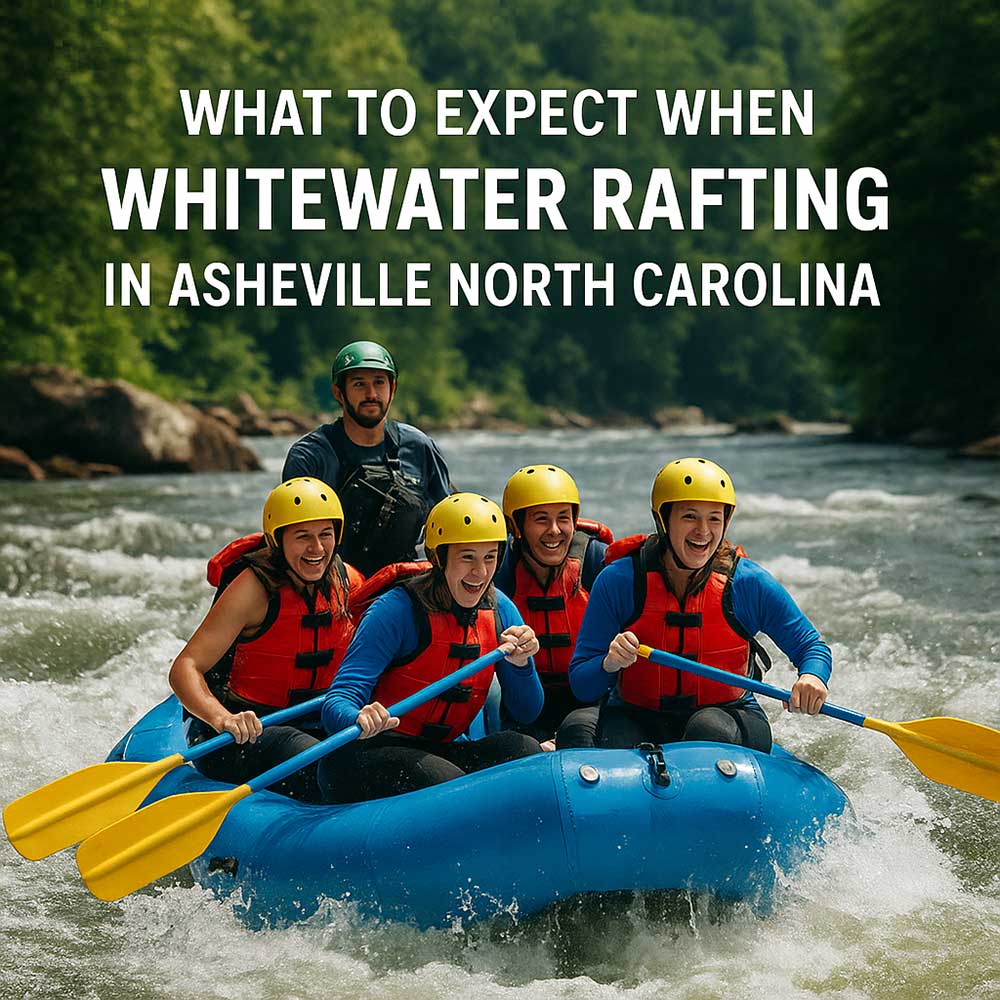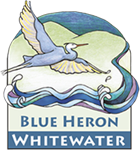What to Expect When Whitewater Rafting in Asheville, NC
If you're planning to raft near Asheville, NC, here's what you should expect—from scenic thrills to practical prep.

1. Rivers & Difficulty Levels
French Broad River (Section 9)
- Just 30–45 minutes north of downtown Asheville
- Offers beginner to intermediate runs—mostly Class II–III, with occasional Class IV drops depending on water levels
- Trips typically last ~4 hours on a 5-mile stretch through Pisgah National Forest
Nantahala
- A dam-controlled river near Bryson City (~1.5-hour drive).
- Consistent flow with 20 easy‑moderate Class II–III rapids—great for all skill levels
Pigeon River
- Offers upper sections with continuous Class III–IV rapids, and gentler lower sections .
Green River (Narrows)
- 35 miles south of Asheville.
- Releases from the dam create Class IV–V rapids—popular with expert paddlers
2. Scenic Style — More Than Just Rapids
- Picture this: Appalachian mountain gorges, big pillows, S‑Turns, Ledges, even riverside lunch stops
- Expect wildlife sightings—herons, kingfishers, maybe even bald eagles or black bears
- Mainstream Adventures
3. Climate & Water Flow
- Best season: Spring to early Fall (April–September/October).
- Spring brings higher water levels—more adrenaline-packed rapids; by fall, water levels can dip—rafts are gentler unless heavy rain arrives
- Water remains cold year-round—be ready for chilly swims; wetsuits and splash jackets are often provided or recommended
4. What’s Included & What You’ll Need
Outfitters like Blue Heron Whitewater typically include:
- Professional, raft-certified guide
- Helmet, certified PFD (lifejacket), paddle & raft
- Snacks, bottled water, and sometimes a riverside lunch (for full-day trips)
- Safety briefing and optional scenic stops
- Quick-drying clothes/swimsuit underneath
- Water shoes or old sneakers (no flip‑flops!)
- Sunscreen, sunglasses with strap, waterproof camera
- Extra set of dry clothes and towel for after the trip
5. Safety & Training
- Expect a thorough safety briefing—covering paddle gets, commands, what to do if you fall out, etc.
- Rafting is generally safe—injury rates are low with proper gear and trained guides
- Guides often hold CPR/First Aid certifications and are trained to read water and scout rapids
6. Tips for a Smooth Trip
- Book early, especially for weekends in summer—slots fill up fast .
- For your first time, opt for Class II–III trips on French Broad or Nantahala—easy but exciting.
- Ask about wetsuit options if rafting in spring or fall; water stays cold even when air warms up (splash gear helps)
- Tipping is customary; around $20+ per person shows appreciation
- Rapids vary with rainfall: high water = more challenging; check trip updates and safety notices pre-booking.
Example Itinerary for a Half-Day Trip
- Arrival & check-in at outfitter (about 30 min before departure)
- Gear up & safety briefing (~15 min)
- Launch into the river—warm‑up with a few mild rapids
- Navigate fun Class II–III rapids, punctuated with calmer stretches
- Reach a scenic spot for a swim break or snack stop
- Ride the bigger rapids (e.g. Pillow, The Ledges)
- Finish with celebration high‑fives when hitting shore
- Debrief, change clothes, and share photos (some outfitters even provide pics)
In Summary
- Expect scenic gorges, expert guides, Class II–III rapids, crisp mountain air—and optional Class IV thrills based on water levels.
- Prepare with quick‑dry attire, splash gear, water‑friendly shoes—don’t forget sunscreen and spirit!
- Book early & tip your guide—you’ll leave wet, weary, and exhilarated.
Whitewater rafting near Asheville offers an unmatched blend of natural beauty, adrenaline, and hospitality. Whether you're taking your first trip or chasing major rapids, the region delivers adventure at every turn. Have your camera ready—but more importantly, get ready to embrace the ride!
